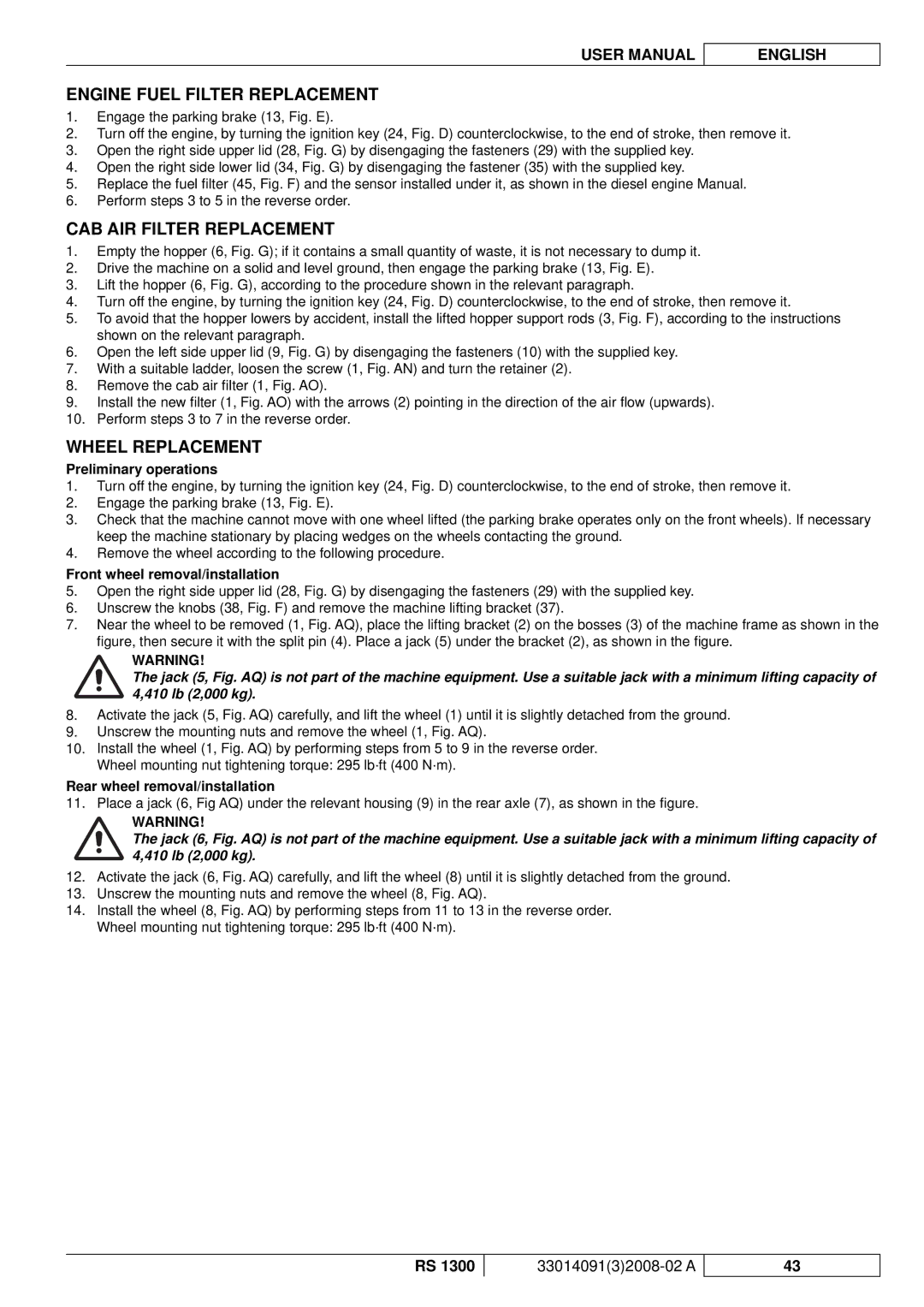RS 1300 specifications
Nilfisk-ALTO RS 1300 is a leading pressure washer renowned for its powerful performance and versatile applications. Designed for both commercial and residential use, this model caters to a wide range of cleaning needs, including patios, driveways, vehicles, and garden furniture.One of the standout features of the RS 1300 is its robust motor, which delivers an impressive pressure of up to 130 bar. This high pressure allows users to tackle stubborn dirt and grime with ease. Coupled with a flow rate of up to 500 liters per hour, the machine ensures efficient cleaning in a shorter time frame.
The RS 1300 is equipped with a highly durable aluminum pump system that not only enhances the lifespan of the unit but also ensures consistent performance during heavy-duty cleaning tasks. The innovative design includes an adjustable pressure nozzle, which offers flexibility for various cleaning applications. Users can easily switch between different spray settings, allowing for tailored cleaning experiences.
In addition to its powerful performance, the Nilfisk-ALTO RS 1300 features a built-in detergent tank, making it convenient to use cleaning agents for enhanced results. This integration simplifies the cleaning process, as users can apply soap directly through the spray gun, boosting efficiency when dealing with tough stains.
Safety and ease of use are paramount in the design of the RS 1300. The machine comes with a safety lock feature to prevent accidental starts, providing peace of mind during storage and transport. Its ergonomic design ensures a comfortable grip, reducing user fatigue during prolonged use.
The RS 1300 is easy to transport, thanks to its lightweight design and integrated wheels. Users can effortlessly maneuver the unit around their property or job site. Additionally, storage is made simple with practical onboard storage solutions for the hose and accessories.
Overall, the Nilfisk-ALTO RS 1300 stands out for its combination of power, convenience, and user-friendly features. With its advanced technology and robust construction, it is a reliable choice for anyone seeking a high-performance pressure washer to tackle their cleaning challenges effectively. Whether for professional or home use, the RS 1300 is designed to meet the rigorous demands of various cleaning applications.

